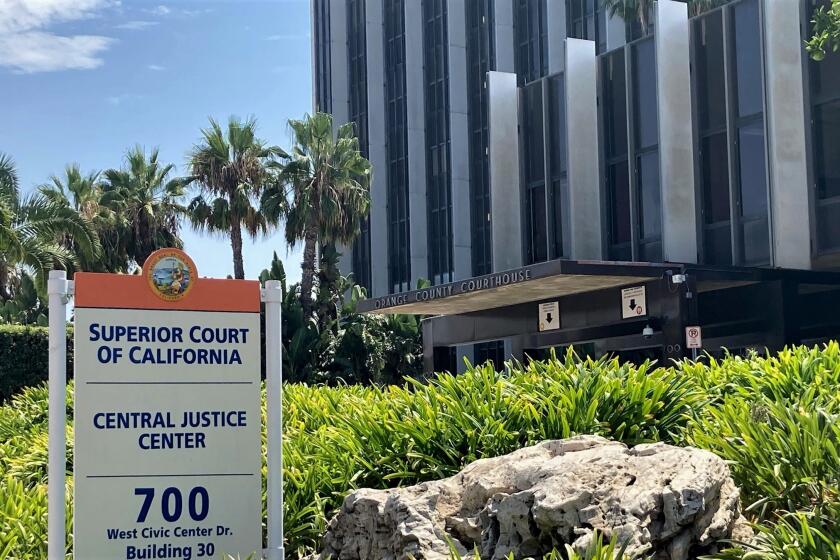Escape from Katrina’s path
- Share via
With just 15 minutes to evacuate, Loyola University student Iain
Dover said he had to leave everything behind.
The college senior’s computer, clothes, books and personal items
were all likely destroyed after Hurricane Katrina grazed the small
New Orleans campus where the Huntington Beach resident studies
philosophy and pre-law.
“I would have done a lot differently if I knew it was going to be
this bad,” he said.
Few people predicted the extent of the damage inflicted by last
week’s hurricane. Many in the city believed they had dodged a bullet
when the hurricane changed course at the last minute, moving
eastward. Then the city’s levee system failed, deluging the low-lying
city with floodwaters up to 20 feet high, possibly killing thousands
and causing one of the worst natural disasters ever in the United
States.
Dover was one of the lucky ones -- he got out of the city hours
before the hurricane hit and was already at the Baton Rouge airport
when the rest of the world began to realize how much damage the Big
Easy had sustained.
For days, New Orleans residents received warnings to evacuate the
city, Dover said.
“Every radio and TV news was telling people to get out,” he said.
“I think a lot of people just didn’t believe it.”
Dover said many believed the city would once more avoid
devastation -- hurricanes often quickly shift east as they approach
the Gulf Coast city, and early reports on the hurricane’s landfall
downplayed concerns about potential damage.
But on Aug. 28, one day before the Hurricane would slam into
Louisiana and Mississippi, Dover received a frantic knock on his
Loyola dorm-room door. It was campus personnel, telling him to get
everything together and be ready to leave in 15 minutes.
About 200 to 300 students from the 2,500-student college
congregated out front, he said, and waited for buses to transport
them to Baton Rouge. School had not begun, and many students hadn’t
yet returned to campus. Dover believes that when the other students
heard about the hurricane, they canceled their flights and decided to
wait out the storm at home.
Traffic getting out of the city was bad, Dover said.
“We were moving at about a block an hour,” he said. “What was
normally an hour-and-a-half drive took nine hours.”
He said the bus was pounded by 30 to 40 mph winds from the edges
of the hurricane, making for a scary drive.
“We knew that if these were 40 mph winds, we wanted to be nowhere
near 160 mph winds,” he said.
Once they reached Baton Rouge, Dover slept in a Baptist church for
two nights with other refuges, at times without power or running
water. The evacuees survived on peanut butter and jelly sandwiches.
“There wasn’t very good food, but at least there was plenty of
it,” he said.
It wasn’t until Dover reached the Baton Rogue airport on Aug. 30
and saw television coverage of the storm that he realized how bad New
Orleans had been hit.
Dover said he’s not sure what he’s going to do next. Early
estimates had the school closing for a week or two, but now the
closure could last for months. Dover is eager to finish his senior
year and take the LSAT for law school.
Dover might qualify for a transfer to Loyola Marymount University
in Los Angeles, a sister school to the New Orleans university,
spokesperson Michelle Williams said.
She estimates that the school received about 300 calls and was
able to place 60 students.
“We expect the students to definitely be here the entire fall
semester and possibly the spring semester, depending on conditions at
their home campus,” Williams said.
All the latest on Orange County from Orange County.
Get our free TimesOC newsletter.
You may occasionally receive promotional content from the Daily Pilot.







